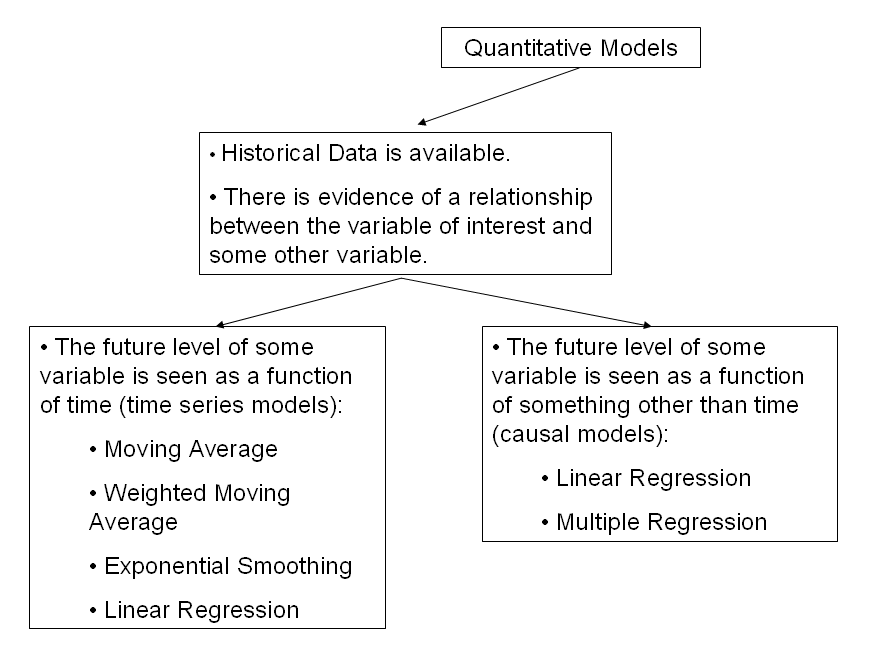This article is part 1 of a series on Forecasting.
A forecast is an estimate of the future level of some variable. That variable is most often demand but could also be supply or price. Most companies forecast in order to help the firm in strategic planning activities such as inventory purchasing, capacity planning, labor planning, etc.
There are different forecasting techniques — both qualitative and quantitative. In this article, I will only discuss quantitative techniques, where to use which model, and the strengths and weaknesses of each model.
Laws of Forecasting
- Forecasts are Always Wrong: No forecasting approach or model can predict the exact level of the future variable. Point estimates are almost always off by some amount. Just understand this fact up-front, and deal with the risks (which we’ll talk about too).
- Forecasts for the near-term tend to be more accurate: Predicting tomorrow’s gas price will likely be more accurate than predicting gas price 6 weeks from now.
- Forecasts for groups of products or services tend to be more accurate: Predicting the demand for trucks will likely be more accurate than predicting for green trucks with a 6-disk cd player.
- Forecasts are no substitute for calculated values: If you know actual demand, then this is more accurate than a forecasts. This is trivial, but let me explain: for example, you manufacture widgets and your customer has placed a purchase order of 6000 widgets. That purchase order is an actual future value of widgets that you need to manufacture. Use that number instead of a forecast using historical data.
There are several quantitative forecasting methods available. Where there is historical data available and the variable of interest appears to be a function of time, then the following models are available: Moving Average, Weighted Moving Average, Exponential Smoothing, and Linear Regression. Where there is historical data available and the variable of interest appears to be a function of something other than time, then Linear Regression and Multiple Regression make sense to use. Below is a decision tree which shows which models make sense to use and when:

In the proceeding articles in the Forecasting Series, we will discuss Moving Average, Weighted Moving Average, Exponential Smoothing, Linear and Multiple Regression. We will also discuss measure of Forecast Accuracy, most notably Mean Forecast Error and Mean Absolute Deviation. Toward the end of the series, we will discuss alternative approaches to Forecasting such as Sales & Operations Planning, and the Toyota Production System or Lean response to Forecasting Law #1, such as Heijunka. Stay tuned.









No responses / comments so far.